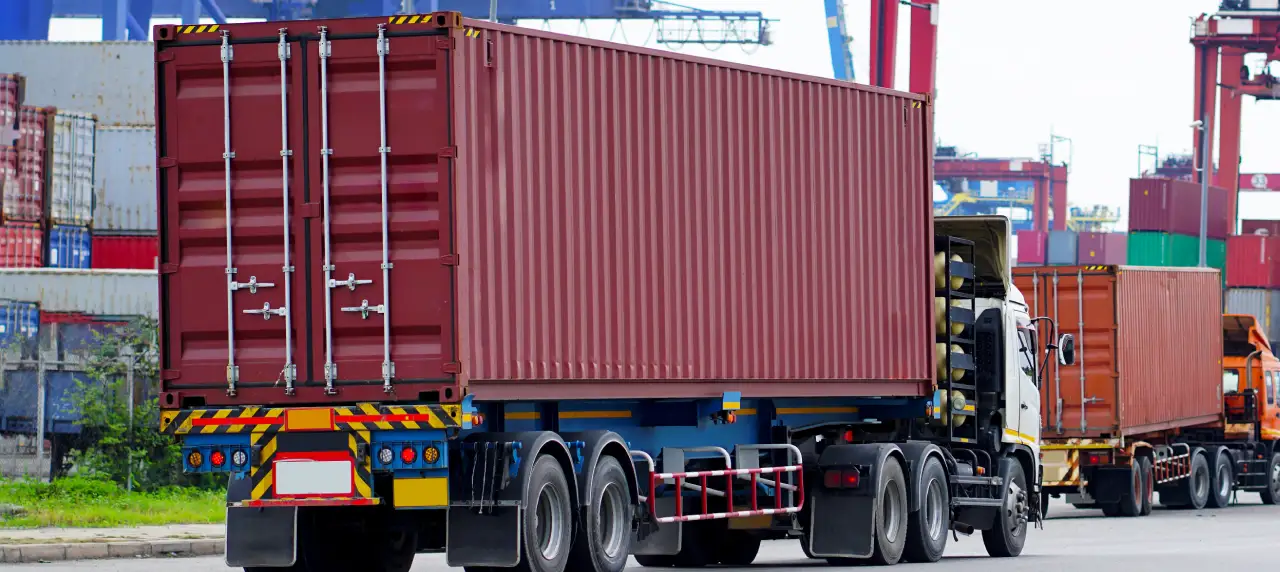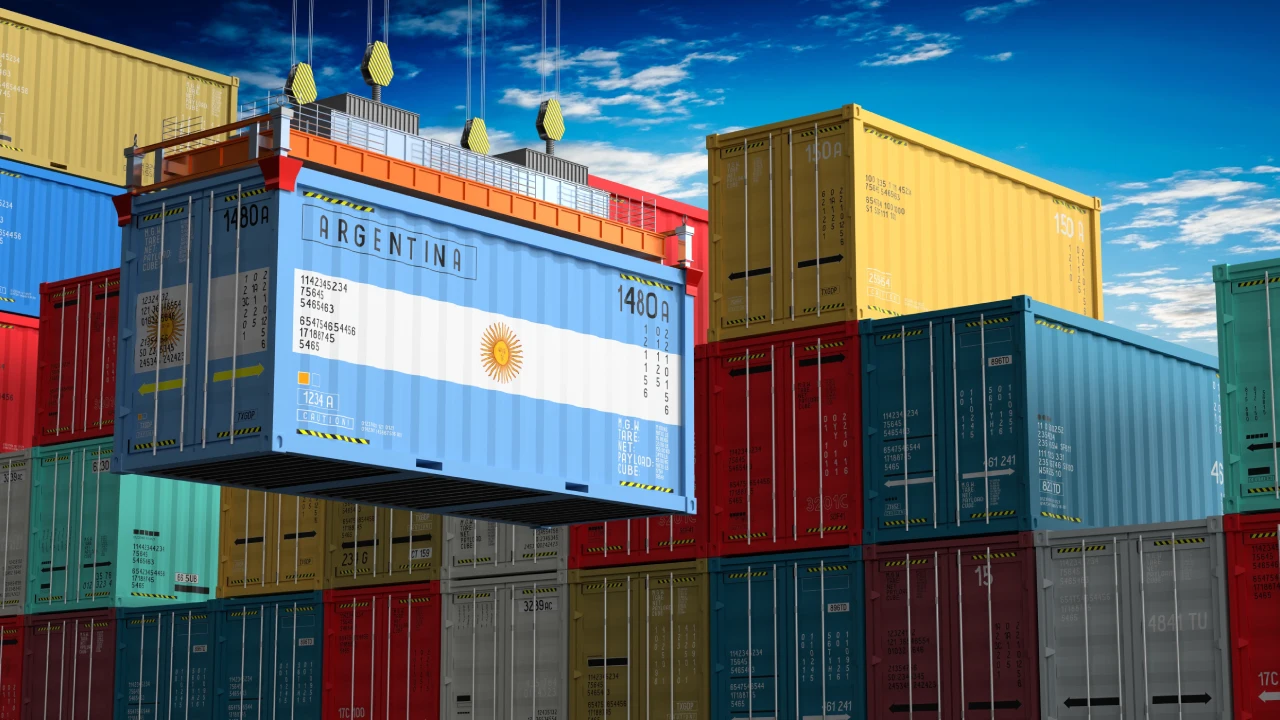
Key Takeaways
- Container drayage refers to the short-haul transport of shipping containers between ports, rail yards, and warehouses
- There are several types of drayage freight services, including expedited, pier, shuttle, and door-to-door trucking
- Key cost factors include shipment weight, distance, equipment, and terminal-specific fees
- Modern drayage technology includes real-time tracking, automated gates, and AI for routing and efficiency
Container drayage is a large sector within the logistics industry, and it plays a critical role in maintaining the steady flow of global trade. This article will explore the drayage definition, the difference between drayage and intermodal shipping, types of drayage trucking services, factors affecting costs, and modern technologies used by drayage providers.
Navigating drayage transportation regulations can be challenging, but Atlantic Project Cargo makes it easier. Our specialized drayage services ensure your cargo is delivered on time, anywhere in the world.
Get a Free Drayage Estimate in Seconds!
Meaning of Container Drayage

Container drayage, also called container trucking or drayage trucking, refers to the transport of shipping containers between ports, rail yards, warehouses, and other logistics hubs. These movements cover relatively short distances and play a crucial role in intermodal transportation. With the rise of global trade, container drayage is especially in demand at seaports, serving as a key component of the modern logistics network.
In a typical drayage process, large steel containers are unloaded from ships or railcars and transferred onto truck trailers. From there, they are transported to warehouses or storage facilities, where the goods inside are stored or unloaded for further distribution. These containers are used to carry a wide range of products and supplies.
Drayage vs. Intermodal Transportation
Drayage and intermodal transportation are closely connected, but they serve distinct roles within the logistics chain.
We have already learned that drayage refers to the short-distance movement of shipping containers between the logistics hubs. In contrast, intermodal transportation covers long-distance shipping that uses multiple modes of transport, such as ships, trains, and trucks, while keeping the cargo in the same container throughout the journey.
Drayage shipping is a component of the broader intermodal process. For example, when a container arrives at a seaport by ship, a truck may transport it to a nearby rail yard, where it is loaded onto a train. After reaching its destination, another truck may complete the final part of the trip by delivering the container to its endpoint.
Types of Container Drayage Services
Ocean container drayage is categorized based on how goods need to be transported. According to the Intermodal Association of North America (IANA), the main classifications include:
- Intra-carrier
This short-distance service moves cargo within hubs owned by the same carrier company. It typically involves transferring containers between a shipping company’s warehouse and its port terminal - Inter-carrier
Unlike intra-carrier drayage, this service moves containers between different transportation carriers, for example, from a rail yard to a seaport, or from a ship to a trucking terminal - Expedited
Used for time-sensitive shipments, expedited drayage ensures rapid container transport. It is ideal for urgent deliveries that require faster turnaround than standard services - Pier Trucking
In this type of service, a truck transports containers from a rail terminal to a pier or dock, where they are loaded onto a ship for continued transit - Shuttle Trucking
When there is not enough space at the port or shipping hub, shuttle drayage provides temporary storage for overflow containers. This helps protect goods until they are ready for the next step of their journey - Door-to-Door
This comprehensive service handles the journey from the port to the final destination. Commonly used by e-commerce and direct-to-consumer (DTC) businesses, it delivers goods straight to the customer’s doorstep

Key Factors Affecting Container Drayage Rates
When it comes to drayage shipping costs, the weight of your shipment and the distance it needs to travel are typically the most significant factors. However, there are several other things that can also impact the final price.
- Weight and Size
The larger and heavier the shipment, the higher the cost. Heavier drayage loads require more time and effort, and may even incur overweight fees if they exceed legal limits. Similarly, oversized shipments cost more due to the special handling and equipment they require. - Distance
The farther your drayage shipments need to go from the port to their next stop, the higher the drayage fees. Long hauls within large metropolitan areas or trips to nearby cities can significantly increase costs. - Origin and Destination
The specific locations for pickup and drop-off matter. Different ports and terminals have varying fees, timeframes, and logistical considerations, all of which affect pricing. - Equipment
The type of truck chassis and equipment needed for transport also influences overall cost. While trucks are common for drayage, specialized equipment such as forklifts or pallet jacks can add to the expense, especially for unusual or delicate loads.
Types of Drayage Fees
Even short-distance moves can come with various charges. These are some of the most common types of drayage fees:
- Peak Surcharges
Expect higher rates for shipments that must move during nights, weekends, holidays, or peak seasons. Urgent or time-sensitive deliveries may also trigger peak surcharges depending on the timing - Accessorial Charges
These include additional costs such as driver detention, fuel surcharges, tolls, terminal fees, extra stops, and specialized equipment rental - Drop Fees
These are charged when a carrier cannot load or unload the freight immediately. Instead, the shipment is dropped at the warehouse and picked up later - Pre-Pull Fees
If a container is retrieved from the port to avoid demurrage charges but cannot be delivered the same day, it must be stored temporarily. This results in a pre-pull fee to cover the cost of holding the container until delivery can be completed. - Chassis Split Fees
When a chassis (the trailer frame used to haul containers) is not available at the port or rail yard, a driver must travel to a different location to find one. This extra trip adds time, mileage, and fuel expenses, all of which are passed on as a chassis split fee.
Drayage Container Types
Most transport containers are 6 to 8 feet tall and come in standard lengths of 10, 20, or 40 feet, depending on the cargo type. Their standardized dimensions facilitate loading, unloading, and transportation across various shipping methods.
Drayage containers come in several types:
| Container Type | Description | Key Features |
|---|---|---|
| Dry (Standard) | Used for general cargo. The most common type. | Fully enclosed, weatherproof, rigid walls, roof, and floor. |
| Flat Rack | Used for oversized or heavy cargo; has collapsible sides. | No roof, and ends may be collapsible or fixed; ideal for machinery and vehicles. |
| High Cube | Similar to standard dry containers but taller for extra volume. | Height of 9'6" (vs. standard 8'6"); extra capacity for large goods. |
| Open Top | A container with no solid roof, allowing for top loading of large items. | Covered with tarpaulin; suitable for tall or awkwardly shaped cargo. |
| Refrigerated (Reefer) | Equipped with a refrigeration unit to transport perishable goods. | Maintains temperature control; used for food, pharmaceuticals, etc. |

Modern Technologies in Container Drayage
The logistics industry implements digital tools and automation to boost efficiency and streamline operations. In container drayage, several key technologies are driving this shift:
- Advanced Tracking Systems
Real-time tracking provides accurate container visibility across the supply chain, helping stakeholders plan better, minimize delays, and improve reliability - Automated Gate Systems
Many ports and terminals now use automated gates with RFID and OCR technology to speed up container processing, reduce wait times, and increase security - AI and Machine Learning
These technologies are used to optimize routes and schedules, predict maintenance needs, and support smarter decision-making, cutting costs and improving overall performance
Why Choose Atlantic Project Cargo Drayage Service
Selecting the best among container drayage companies is crucial for efficient and reliable freight movement. Atlantic Project Cargo takes care of all the issues with freight drayage. Due to our proficiency, your cargo is in expert hands, delivered safely and timely to its final destination.
Service Coverage and Locations
Atlantic Project Cargo offers extensive coverage across key US logistics hubs, ensuring drayage trucking services where you need them most. We operate in the regions and ports you need, with strong connections to terminals, rail yards, and intermodal hubs.
Expertise in Your Cargo Type
Different freight requires specialized handling. Whether you are shipping heavy machinery, high-value goods, or temperature-sensitive cargo, our team has the experience and insurance coverage to protect your shipments from loss or damage.
Fleet and Equipment Capabilities
Atlantic Project Cargo maintains a diverse fleet that meets environmental regulations and handles even the most complex shipments. We have modern, well-maintained trucks and the right equipment.
Compliance and Certifications
Our company adheres to all standards and local regulations. We uphold strict compliance, ensuring safe and lawful drayage logistics.
Transparent Pricing
We provide clear, upfront drayage quotes with no hidden charges, so you can budget with confidence.
When choosing an intermodal and drayage carrier, trust Atlantic Project Cargo for reliability, expertise, and transparency every step of the way.
Get a Free Quote!
Conclusion
The drayage industry plays a crucial role in logistics. As global trade grows, this short-distance transport service remains a vital link in the supply chain, helping move goods efficiently from ports to their next destination. For businesses aiming to streamline their logistics, partnering with the right drayage carrier is essential for reliable, cost-effective delivery.
FAQ
Drayage services involve the short-distance transport of goods, typically moving containers between ports, rail yards, and warehouses.
A drayage truck is a vehicle used to haul transport containers over short distances, usually within the same city or region.
Intermodal drayage is the transport of containers between different modes of transport, like from a port to a rail terminal or warehouse.
An intermodal drayage company specializes in moving shipping containers between different transportation hubs, ensuring smooth transitions between ships, trains, and trucks in the supply chain.
Rail drayage involves transporting containers to or from a rail terminal, connecting them to trains for long-distance travel. Port drayage involves moving containers to or from a seaport, linking them to ships for international shipping.
Read More



